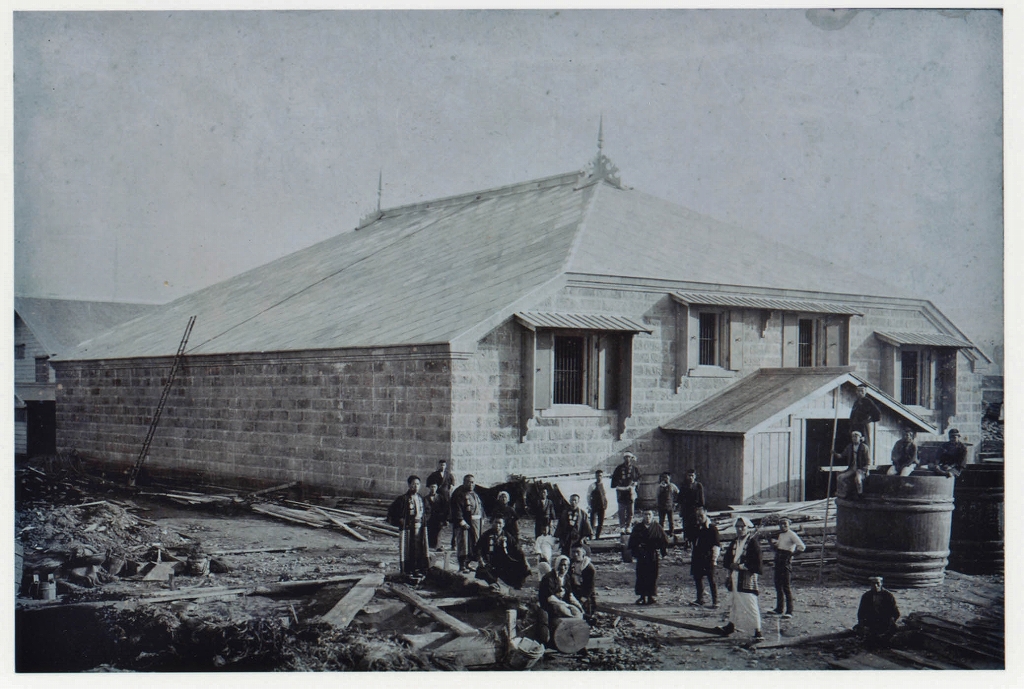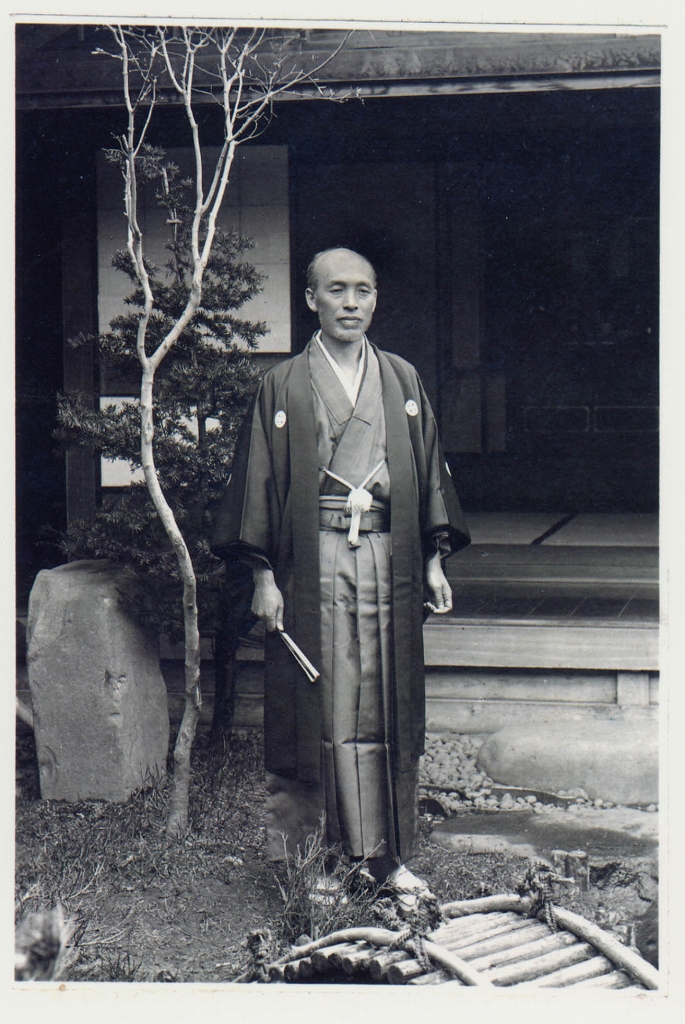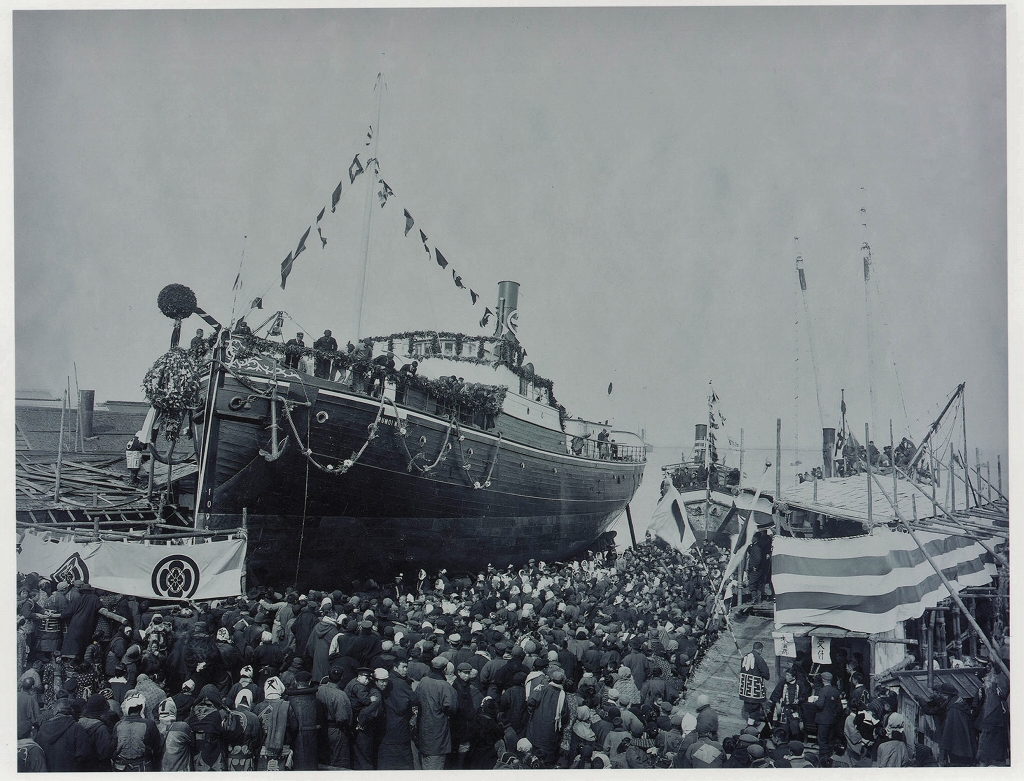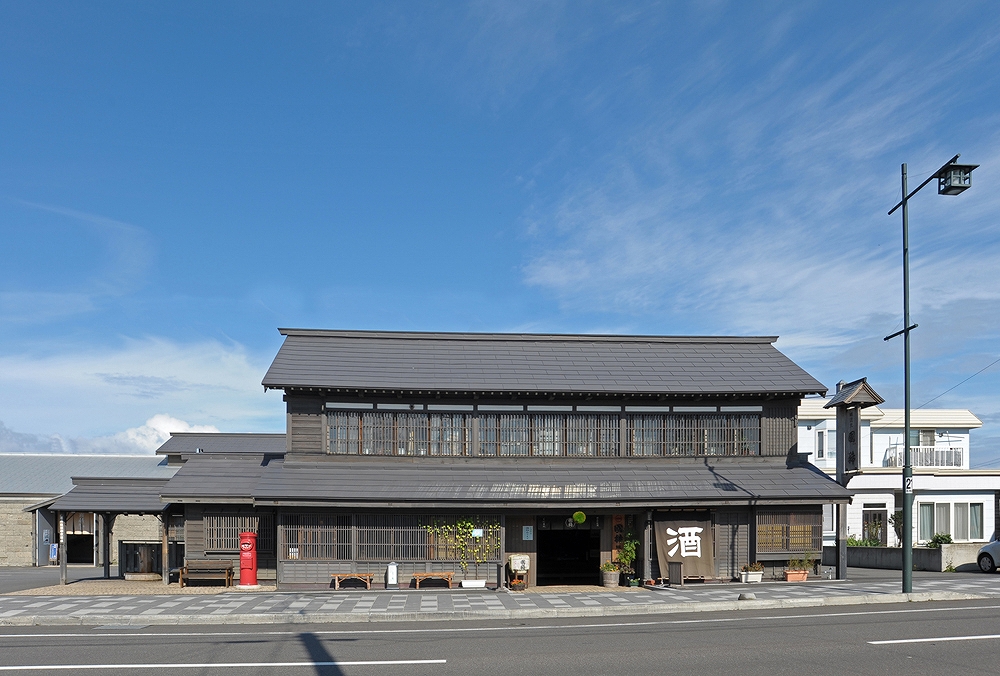
Kunimare’s sake brewery circa 1902

Kunimare’s sake brewery circa 1902
Kunimare Shuzo Co., Ltd. is located in Mashike Town on the Sea of Japan. In the past, Mashike Town and Rumoi City were deeply connected with the commercial capital of Hokkaido, Otaru, by ship rather than land.
The shipping routes in the Sea of Japan at the time depicted a map of Hokkaido different from today.
The Hiyama region of southern Hokkaido, location of Matsumae and Esashi, became the focal point of Hokkaido’s herring industry on the Sea of Japan side, which began in earnest from the early 18th century. However, as the fishing stock depleted, the fishing grounds began to move north around the middle of the 19th century. Fisherman led a huge migration north in search of the herring.
The distribution of Ezo products, most notably herring and kombu kelp, would become a driving force behind Japan’s economy at the end of early modern times.
Honma Taizo (1849 – 1927), founder of Kunimare Shuzo, was born on Sado Island in Niigata Prefecture. At the age of 20, he left the island and came to Otaru where he worked at Maruichi Matsui Dry-goods Store.

Honma Taizo
Sado Island was deeply connected with Hokkaido by marine transport since the Edo period and together with the Tsugaru and Hokuriku regions, it produced a large number of immigrants who settled in Hokkaido. Taizo worked hard selling merchandise in the Mashike area on the shores of Ishikari Bay opposite Otaru. In 1875, he moved to the area and went into business for himself. The name of his company was Maruichi, a name he inherited from the proprietor at his previous job. Taizo’s chance came when this proprietor decided to close up shop and sold all of his merchandise to Taizo at a very low price.
Taizo started out as a purveyor of dried goods and sundries. Then in 1881 he obtained herring fishing rights and the next year in 1882 he filed the paperwork to establish his own brewery.
In the early Meiji period marine shipping played an important role in distributing products to Hokkaido, which cost money. The people of Mashike faced supply shortages and fluctuating prices because of the unreliable roads leading to the area and a lack of regular shipping service in the winter due to poor weather.
Given this, fisherman began to appear who operated their own steamers to transport goods. One of the most notable of these figures was Honma Taizo.

Launching ceremony of the Rumoi-maru
The first ship that Taizo purchased in 1887 was a 30-ton wooden steamer. The next year he acquired the Kabato-maru, a 35-ton ship used in the Ishikari River. Taizo would go on to increase his fleet and the Teshiokawa-maru built at the local shipyard inaugurated a regular shipping service to Sakhalin, while the 140-ton Mashike-maru connected Mashike and Taizo’s hometown of Sado via Otaru, Kodaira, and Iwanai. In 1910, his risked his own life sending out the 330-ton Rumoi-maru to save the people of Sakhalin who faced supply shortages due to bad weather. Later, he would receive a letter of appreciation from the head of Karafuto Prefecture. Maruichi Honma, which operated a fleet of 12 steamers, went on to great prosperity in the marine shipping industry.
Although it may be hard to believe today, shipping routes in the Sea of Japan spreading out from Otaru served as a major thoroughfare indispensable to people’s lives and the economy. There were regular and even non-regular shipping services connecting Otaru not only with other parts of Japan, but also South Korea, Russia, North America and Europe.
The herring industry brought great wealth to Hokkaido’s coast on the Sea of Japan side for more than 250 years. However, this industry ended in 1958. The herring industry in the Sea of Japan off Hokkaido ended as if it were suddenly swept away by the river of history.
Photos: Kunimare Shuzo Co., Ltd.

Kunimare Shuzo Co., Ltd. 
1-17 Inabamacho, Mashike Town, Mashike-gun, Hokkaido, Japan
TEL.:0164-53-1050
Shop, sake tasting area, and museum: 9:00am to 5:00pm
Website
Former Residence of Merchant Maruichi Honma (National Important Cultural Property) 
1 Bentencho, Mashike Town, Mashike-gun, Hokkaido, Japan
TEL.: 0164-53-1511
Open: 9:00am to 5:00pm